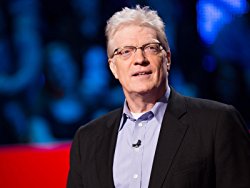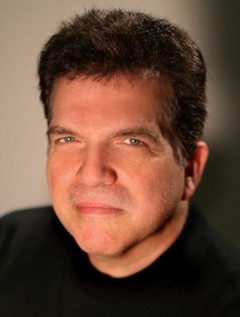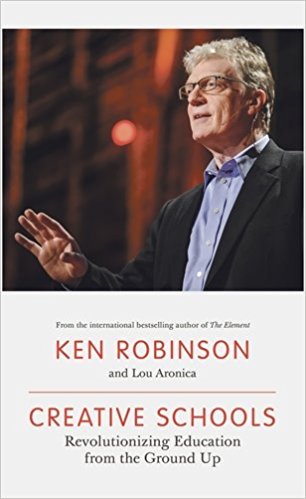Creative Schools Summary
5 min read ⌚
 Revolutionizing Education from the Ground Up
Revolutionizing Education from the Ground Up
Revolutions throughout history have always been an illustration that something is not unfolding as it should.
People voiced displeasure and took drastic measures to implement their reforms.
We focus on the weaknesses of our educational system, and how to overcome them with a sincere attitude.
Who Should Read “Creative Schools”? And Why?
Schools represent an institution that is designed to improve our way of life, by providing valuable information on numerous subjects.
“Creative Schools” on the other hand, highlights the key elements that require special attention – regarding education, and how to inflict change.
About Ken Robinson and Lou Aronica
 Ken Robinson is hailed as an exceptional writer, education advisor, and a speaker. He was also a professor at the University of Warwick, teaching pedagogy.
Ken Robinson is hailed as an exceptional writer, education advisor, and a speaker. He was also a professor at the University of Warwick, teaching pedagogy.

Lou Aronica is the author of several non-fiction books.
“Creative Schools Summary”
Pretty much all countries worldwide don’t have the tools nor the will to modernize the education system. Let’s take it from the top – Who created the modern-version of schools? You certainly did not, but it sure does concerns you, because each one of us is an integral part of the same processes.
Well, one thing is certain, whosoever invented this institution didn’t plan to form an organization, which will foster creativity. In general, the talent comes secondary, and the students must abide by the rules of the teachers.
Formal education was designed to produce healthy workforce or people who can create value while working in the factories. So, that was the day when exploitation of workers officially started.
So, the Westerners launched a wide-spread education campaign for one apparent reason – to produce labor for the industries with such demands. Considering the fact that education is performed in line with linear processes and hierarchy, schools play a vital part in developing such workforce.
After conducting a series of investigations and experiments, skeptics realized that all individuals absorb the knowledge uniquely. So, think again if you insist that your child should perform exquisitely in school.
In reality, schools are not aware of the innate talent dwelling within these kids. Regardless of where you come from, we all have been “whipped” by the system, which treats us as if we’re robots. Perhaps the style doesn’t fit your intelligence, but who cares, right?
Not just that, remember when you first visited an educational institution. The principal enforced a set of principles that didn’t suit you, but you were forced to act upon them. For instance, some first graders have a tough time understanding math, but they flourish in other areas and vice versa.
Instead of grouping the children by their abilities, the system sorts them by age.
Until now, we focused on what’s wrong, but is there something we can do?
Generally speaking, we can draw information and inspiration from the systems that actually work quite well – like organic farming. This type of cultivation includes four fundamental principles: Health, Ecology, Fairness, and Care.
Organic farming is not oriented towards treacherous ideals, but instead, its primary source derives from care and equality. Now, you can really get the big picture, how present and future generations will taste its benefits.
At first glance, one may think that these principles are not compatible with education. However, you should have in mind that these methods are not specially developed for organic farming, but their essence is created for achieving success.
The conventional education model is no longer appropriate because it emphasizes achievements rather than putting an accent on talent and creativity. The tendency to apply these tips puts the whole world in danger because we put at risk the well-being of the future generations.
Evidently, many of the students regardless of their age are bored during the classes. An ignorant person would say, “Well that’s only normal and natural” – but is it really? Just imagine, how can the childish innocence and curiosity suddenly disappear the minute your child enters the classroom?
The teachers take this sign as a lack of respect towards the elders, but in truth, they must adjust their methods and thus spark creativity.
If you ever become a teacher, then it’s up to you to spark and ignite that creativeness, rather than burying it. Don’t go for mediocrity, and build your private generation of geniuses.
Here are a few tips.
-
- First, engaging the students in open-discussions, and allowing them to share their views will gradually produce masters and creative individuals.
-
- Beyond that, wise teachers realize that not all students perceive the learning material in the same way.
- And most importantly, great teachers must foster self-belief and continually remind them to stay calm, efficient and productive while conducting some task.
To sum up; in order to put this idea into action, the community must be brave enough and advocate for such modification that will undoubtedly generate positive results.
Key Lessons from “Creative Schools”
1. The real truth about kids
2. Suitable scheme for achieving victory
3. The decay of western society
The real truth about kids
Babies are natural learners, and they are restless to learn more about this world.
All the time, you have to quench their thirst for knowledge by giving them answers to their questions – so declaring that young adults are not so much into learning is totally incorrect.
Suitable scheme for achieving victory
When education is perceived from an impartial standpoint, a full-scale change is crucial for getting out of this bubble.
Although the future is uncertain, we must prepare our successors for the trickiness that lies ahead in all forms.
The decay of western society
In the end, we produce a workforce that is far from reaching its potential, and thus poverty comes into view in the less modernized communities.
Neglected by the society, a large portion of these individuals end up penniless, prosecuted and unhappy.
Like this summary? We’d Like to invite you to download our free 12 min app, for more amazing summaries and audiobooks.
“Creative Schools” Quotes
Learning in and about the arts is essential to intellectual development. Share on X Many schools are organized as they are because they always have been, not because they must be. Share on X Because when enough people move, that is a movement. And if the movement has enough energy, that is a revolution. And in education, that’s exactly what we need. Share on X The one that we’re involved with is that kids are natural learners. That’s the paradigm we know is true, and modern brain research reinforces that at every step. But the one that schools operate under almost everywhere is that kids are… Share on XOur Critical Review
Once again, we feel like a change is inevitable.
This book has opened our eyes to the possibility that we’ve been deceived, and now we must wake up.
Emir is the Head of Marketing at 12min. In his spare time, he loves to meditate and play soccer.


 Revolutionizing Education from the Ground Up
Revolutionizing Education from the Ground Up




